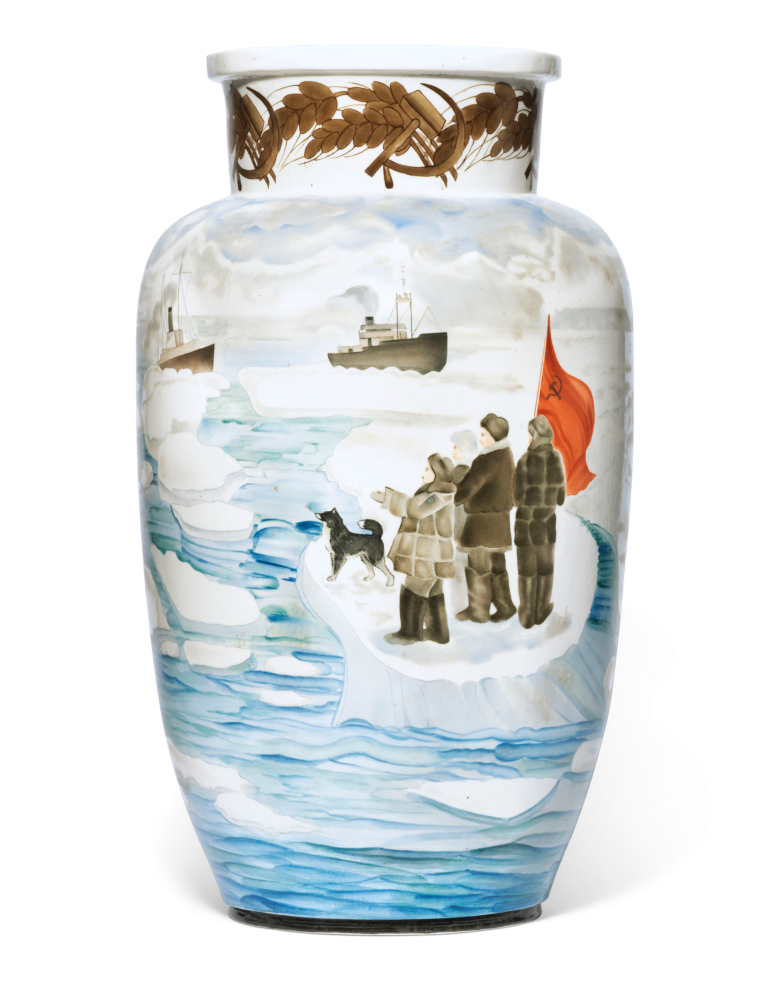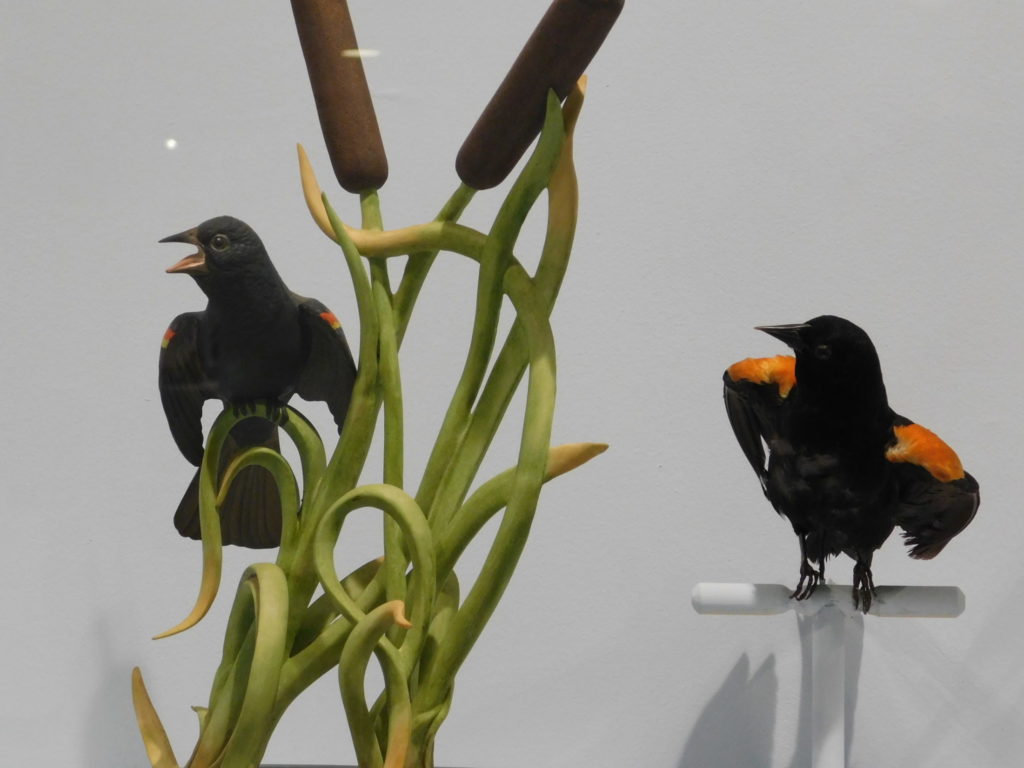This Soviet-era porcelain vase commemorating the North Pole -1 expedition is pretty accurate: four men and a dog named Vesely were dropped off on a drifting ice floe about 12 miles from the North Pole in May, 1937. By the time they were picked up (at great cost) off of Greenland in February, 1938, the ice floe had shrunk considerably in size.
Propaganda porcelain first started to be produced following the Soviet nationalisation of the Imperial Porcelain Factory in 1918. The factory storage was filled with uncoloured plates, vases, and tea sets, which were all used as the bases for a novel form of Soviet propaganda.
Soviet Colonial Porcelain: How Plates, Vases and Tea-Sets Support the Conquest of Land by Sasha Setsakova





